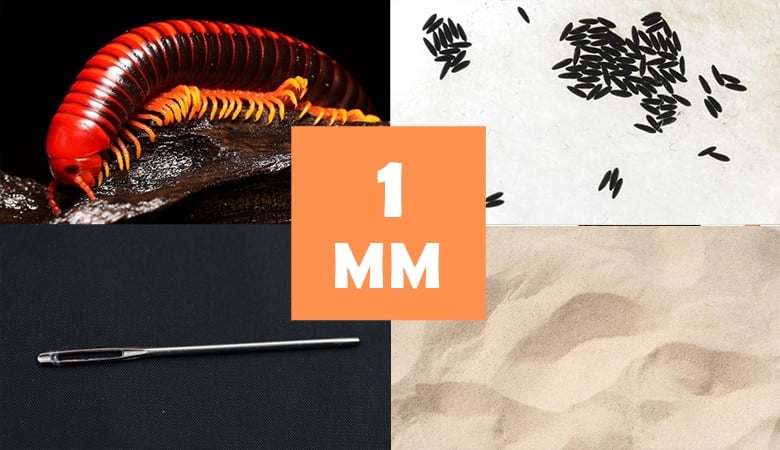Measuring 1 millimeter might be one of the challenging projects you can ever undertake. You can use a standard ruler with a millimeter mark for some objects or a tape measure.
However, if you must measure one millimeter accurately, a caliper would give the best results. In some instances, you would have to use a microscope to convert bacteria and cell measurements from micrometers to millimeters.
Anything that is a millimeter long is tiny and barely visible to the naked eye. Even watchmakers who deal with the minor components use smaller magnifying objects to put the parts together. Take a look at some items and organisms that measure 1 millimeter.
1. A pencil tip
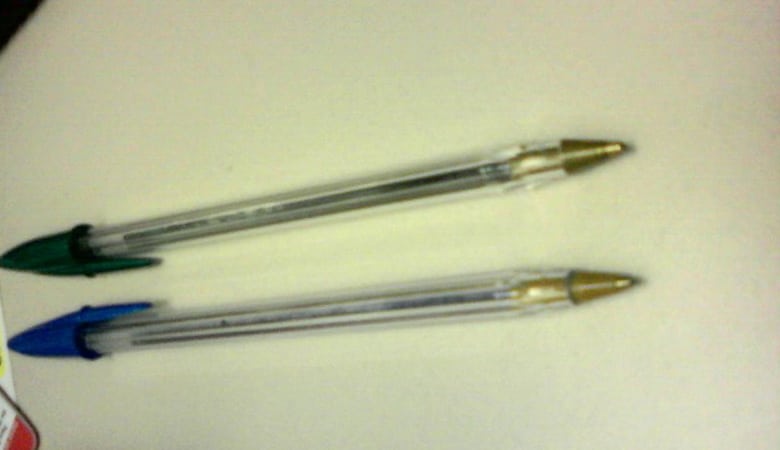
The tip is usually sharp and refined when a pencil is still new. A sharpened pencil tip is 1mm long before it is used. Some pencils can also have tips longer than 1 millimeter measuring around 2 or 3 mm. A full pencil with the tip is 7.5 inches long.
2. A baby’s growing tooth

A baby’s first set of teeth is deciduous, also known as milk teeth. These teeth develop within the embryonic stage before erupting through the gums to be visible. The first teeth to pop out are the mandibular central incisors which are 1 millimeter long.
These teeth later fall off to be replaced by permanent teeth. The last teeth to grow are the maxillary second molars which are also last to fall.
3. A mustard seed

The mustard seed is among the smallest of all seeds yet it grows into plants taller than 30 feet. Even in the bible, the parable of the mustard seed advises believers to have a little faith in God and grow spiritually.
A mustard seed is only 1 millimeter long and can barely be seen when you hold it in your hand.
4. Lice
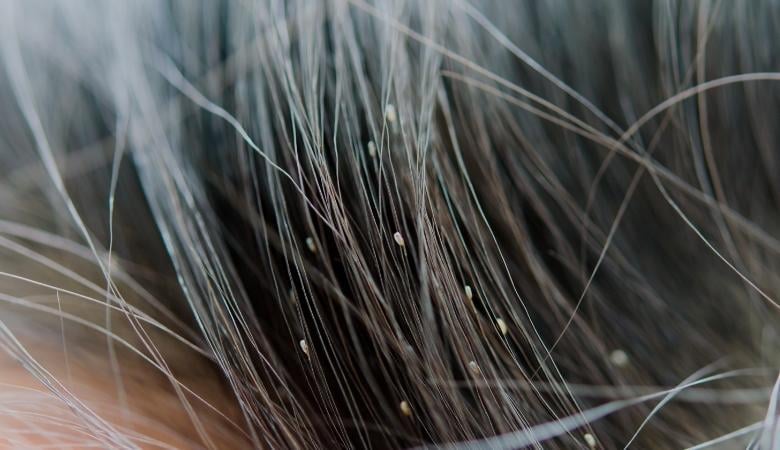
Lice are parasitic insects that live in people’s hair. The term louse refers to the members of the clade phthiraptera cwith over 5,000 species. These wingless parasites are a nuisance, especially when you cannot control them.
A louse can only be 1-millimeter long, meaning that you would never see them breeding in your hair even with a thorough cleaning.
5. Mites
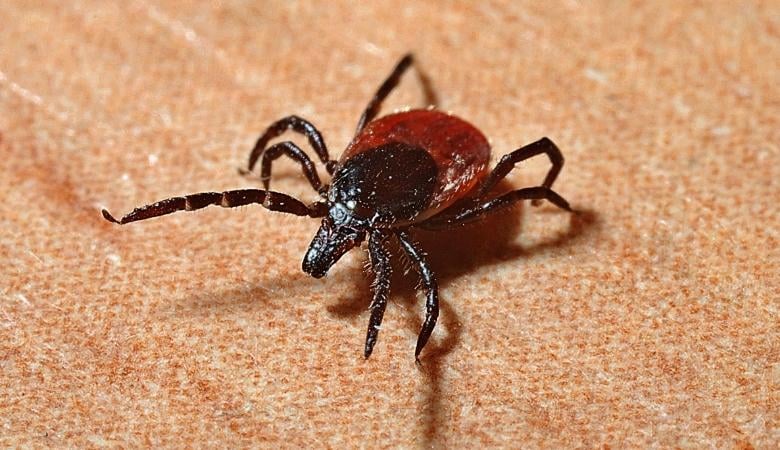
Mites are members of the class Arachnida and are some of the smallest organisms in the animal kingdom. Their eight legs and unsegmented body characterize them and are 1 mm long or less, depending on the species.
Mites are not considered insects and are closely related to spiders and ticks. Although small, mites are visible to the naked eye.
6. Orchid seeds
Orchid farmers will tell you that growing these plants need time and patience because it is a cumbersome investment. Orchid seeds are tiny, at only 1 millimeter long, and can take two years to show leaves.
It will take another four to eight years to start blooming. If you are patient enough, these seeds can grow into beautiful houseplants.
7. Mosquito eggs
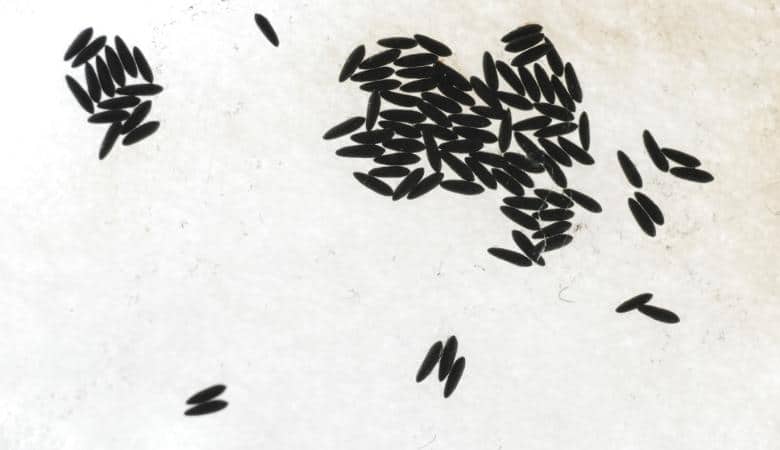
Mosquitos are notorious for causing malaria, and their mutations make it harder to deal with the endemic. The anopheles mosquito lays eggs on water which later grow into larvae before becoming mosquitos.
These eggs are visible and measure 1 millimeter during the initial breeding period.
8. A tumor
Tumors usually grow into cancer if not controlled in the early growth stages. When diagnosing cancer patients, the tumors are measured in millimeters and centimeters. A tumor measures anywhere from 1 millimeter and can grow up to three centimeters.
A small tumor can show a good prognosis, especially for a patient who has been on treatment.
9. Sewing needle tip

Tailors and fashion designers need a variety of sewing needles to make apparel or to fix damaged fabric. Sewing needles range in size from five centimeters upwards. The sharp tip of the needle penetrates the material to pass the sewing thread.
The pointed end is very short and measures only 1 millimeter, enough to pierce through tough fabric.
10. Growing hair
When you shave your head clean, it will take a few days before you see hair sprouting from your scalp. These hairs are tiny and unnoticeable from a distance.
The human grows by 1-millimeter daily, meaning that in 10 days, your hair could be 1 centimeter long.
11. A millipede leg
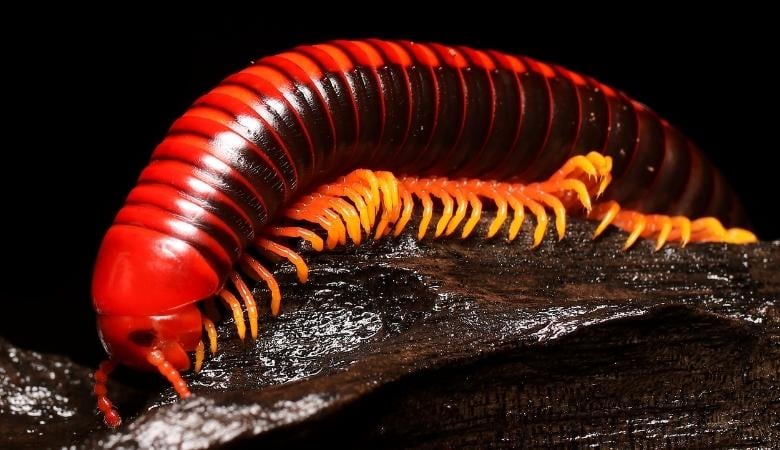
Millipedes and centipedes are among the crawling insects with the most legs. The difference is that a centipede has a pair of legs per segment while a millipede has two pairs of legs in each segment.
An adult millipede has more than 750 legs, with some having over 1000 legs. The legs are tiny and can measure a millimeter.
12. A tiny bead
Beads are used for making custom jewelry, and luckily, you can find almost all sizes to make something for yourself. The tiniest beads measure 1 millimeter, producing some of the most colorful handmade jewelry. To record such bead sizes, you will need a caliper for accurate measurements.
13. Grain of sand

Any particles measuring 0.6 mm to 2mm are said to be sand. Anything above that is referred to as gravel. Sand grains are not all equal in size, and some are slightly bigger than others. A single grain of sand can measure 1 millimeter. To accurately measure the size of a sand grain, you must use calipers.
Measuring the length of objects need a ruler or a measuring tape, but tinier objects need more specialized tools. However, you do not require such a tool to determine how big a bead is or a louse. You can take your time to read through such posts to get more information.
The dimension of stuff has been an interest of mine ever since I was a child. What I believe is most fascinating about the dimension of stuff is how extremely long, tall and wide some objects are both on earth and in the universe.

